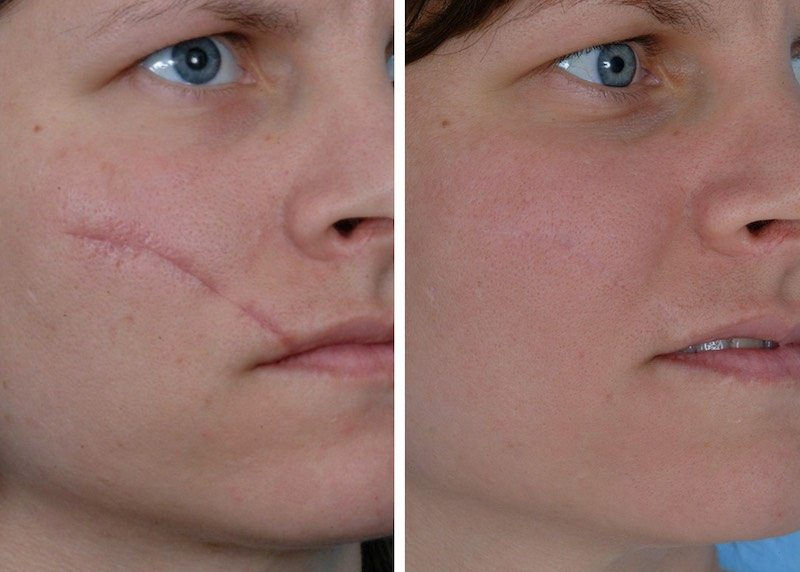Scar Reduction Treatment in Kumbakonam - Nkskin Hair Laser Center
- contact07074
- Sep 12, 2020
- 2 min read
Scarring is the process by which wounds are repaired. Damage to the deeper layer of the skin, the dermis, is required to produce a scar. Damage to only the epidermis, the most superficial layer of skin, will not always produce a scar. Scars produce a structural change in the deeper layers of the skin which is perceived as an alteration in the architecture of the normal surface features. It is not just a change in skin color. Fetal tissues and mucosal tissues have the ability to heal without producing a scar. Understanding how and why this is possible could lead to better surgical scar outcomes. Read More
Scars occur when tissues have been significantly damaged and repaired.
Scars result in changes that alter the physical architecture of normal skin or other tissue.
Scars can occur after physical trauma or as part of a disease process.
Poorly controlled wound healing can result in thick, unsightly scars that cause symptoms.
There is a genetic predisposition in some people to produce thicker, itchy, enlarging scars called keloids.
Scarring in areas of increased skin tension or movement tend to be unsightly.
When wounds are produced surgically, physicians utilize techniques to minimize scarring.
Scars are almost always diagnosed by visual inspection. There are a number of rare situations when it may be necessary to examine scar tissue under the microscope to confirm its true identity. This would require a biopsy of the skin and may require the injection of a local anesthetic. Sometimes other skin conditions can form in a scar and require a biopsy in order to be diagnosed. View More
Since scars are part of the normal healing process, ordinary scars are not treated. Only when superficial scars become cosmetically undesirable do they require treatment. This would include scars in those who are predisposed to develop keloids, as well as scars in anatomical regions known to produce thick scars and scars that produce a significant, unpleasant distortion of adjacent anatomical structures. Thick scars and keloids often flatten out after injections of steroids directly into the fibrous scar tissue. They can respond to the chronic application of pressure and the application of sheets of silicone rubber. Thick scars can be flattened by dermabrasion, which utilizes abrasive devices to sand down elevated scars. Certain types of depressed scars can be elevated by the injection of a cosmetic skin filler. Certain types of facial scarring respond well to forms of laser treatments. Occasionally, surgical revision of scars can result in a different scar that is much more cosmetically desirable. Since it takes about a year for scars to mature, it is frequently prudent to wait before starting any invasive surgical revisions. More Details







Comments